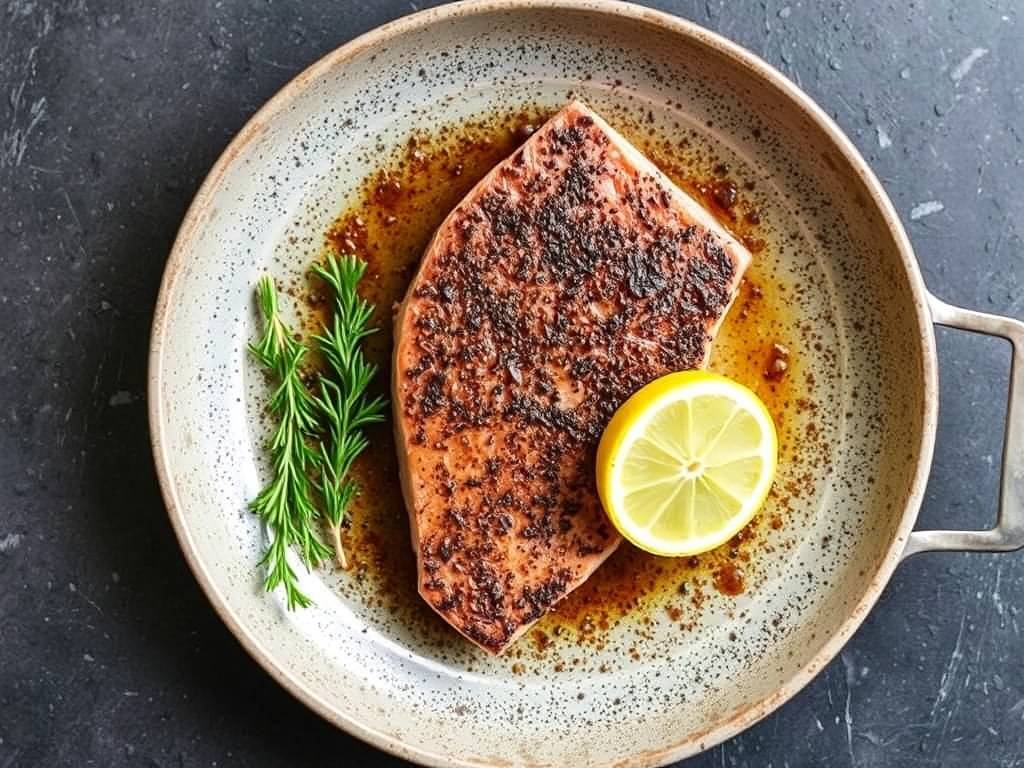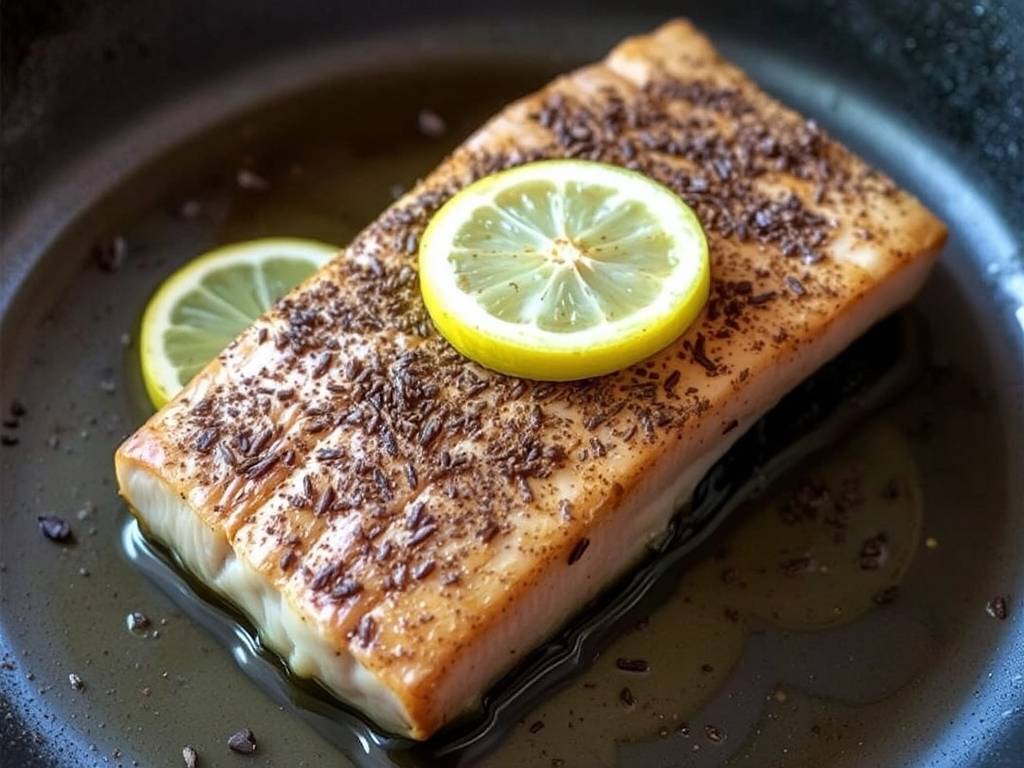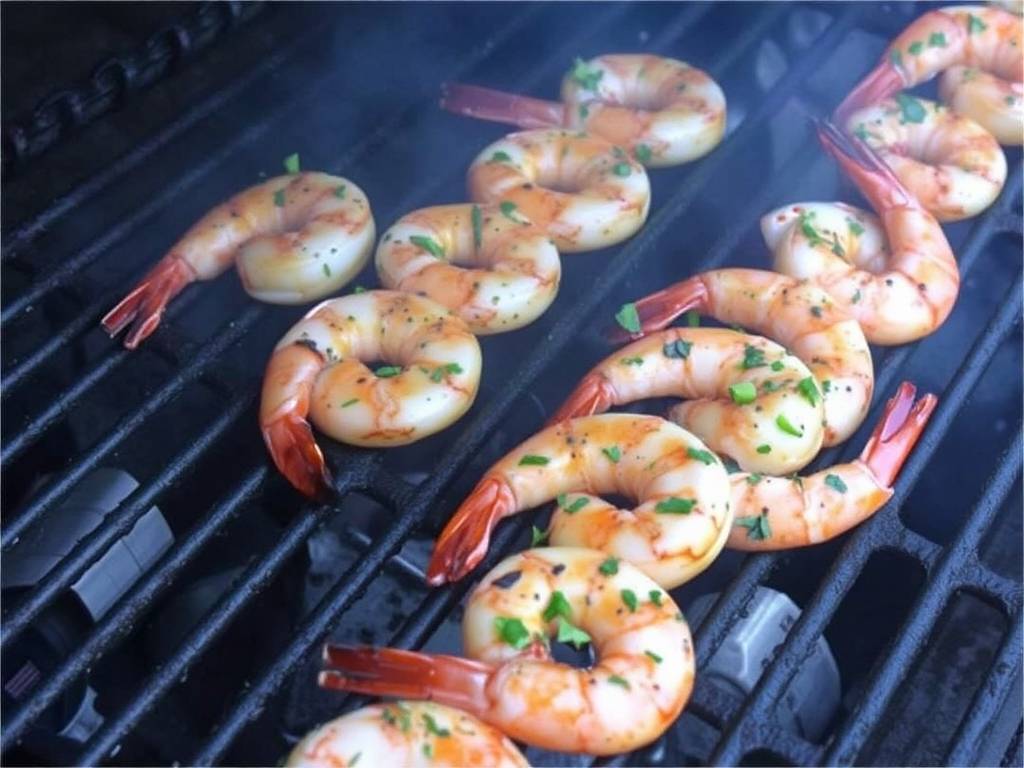The Art of Perfectly Blackened Tuna Steak with Lemon
The sizzle of a perfectly seasoned tuna steak hitting a scorching hot cast-iron skillet is a sound that promises a culinary adventure. It’s a dish that straddles two worlds: the aggressive, spice-forward crust of Cajun-inspired blackening and the delicate, pristine, sushi-grade quality of the fish within. To master this dish is to understand the delicate balance between fire and finesse, between bold seasoning and the clean, oceanic flavor of the tuna itself. Accompanied by a simple yet transformative squeeze of fresh lemon, a blackened tuna steak is not just a meal; it’s an experience that is both surprisingly simple to execute and profoundly impressive to serve.
The journey to perfection begins not at the stove, but at the market. The single most critical factor in this recipe is the quality of the tuna. Not all tuna steaks are created equal for this preparation. You are seeking "sushi-grade" or "sashimi-grade" tuna. This designation, while not a formal USDA grade, generally indicates that the fish has been frozen to a specific temperature to eliminate parasites, making it safe to consume when cooked rare or raw in the center. Look for ahi or yellowfin tuna, which boasts a firm texture and a rich, meaty flavor that stands up beautifully to the blackening process. The steak should be a deep, ruby red, with a firm texture and a clean, fresh sea-breeze aroma. Avoid any fish that looks brownish, has gaps in the flesh, or smells unpleasantly "fishy."

Once you have procured your magnificent piece of tuna, typically cut about 1 to 1.5 inches thick, the next step is preparation. Remove the tuna from the refrigerator about 15-20 minutes before cooking. Allowing it to come closer to room temperature is a small but crucial step; it ensures the steak cooks more evenly, preventing a cold, raw center while the exterior overcooks. Pat the steak thoroughly dry with paper towels. Moisture is the enemy of a proper sear; a wet surface will steam rather than sear, preventing the formation of that iconic dark, crispy crust.
Now, we turn our attention to the soul of the dish: the blackening seasoning. While pre-mixed blackening seasonings are readily available, crafting your own blend allows you to control the heat and complexity of flavors, elevating the dish to new heights. A classic blackening spice blend is a symphony of paprika (which provides a deep red color and sweet base note), garlic powder, onion powder, dried thyme, and dried oregano. The heat comes from cayenne pepper, which can be adjusted to your personal tolerance. For a more nuanced warmth, add a touch of white or black pepper. Don’t forget the earthy, almost smoky depth of ground cumin, and the crucial savory note of salt. A small amount of sugar can be added to promote caramelization.
To assemble your blend, combine two parts paprika with one part each of garlic powder, onion powder, and salt. Then, add half-parts of dried thyme, dried oregano, black pepper, and cumin. Finally, add cayenne pepper to taste, starting with a quarter-part for mild heat and increasing from there. Mix these spices thoroughly in a small bowl. This homemade blend will be far superior to any store-bought alternative, free of anti-caking agents and bursting with fresh, potent flavor.

Generously coat all sides of the dried tuna steak with the spice blend. Press the seasoning into the flesh to ensure a good, even coating. There should be a visible, vibrant layer of spice covering the entire surface. At this stage, some chefs like to drizzle or brush the steak with a high-smoke-point oil, such as avocado oil or grapeseed oil. Others prefer to add the oil directly to the pan. Both methods work, but coating the steak can help the seasoning adhere and promote an even sear.
The cooking vessel is non-negotiable: a heavy-bottomed cast-iron skillet is essential. Cast iron excels at retaining and distributing intense, even heat, which is paramount for creating the blackened crust without burning the spices. Place your dry skillet over high heat and let it preheat for a good 5-7 minutes. It needs to be screaming hot—so hot that a few drops of water flicked onto the surface dance and evaporate instantly. This extreme heat is what will create the Maillard reaction, the chemical process that browns the spices and the surface of the tuna, developing incredibly deep, complex flavors.
Carefully add a tablespoon or two of your high-heat oil to the hot skillet. It will shimmer immediately. Using tongs, gently lay the seasoned tuna steak in the center of the pan. The sound should be a confident, vigorous sizzle. Resist the urge to move or press down on the steak. Let it cook undisturbed for approximately 60 to 90 seconds. Peek at the edges; you are looking for a dark, nearly black crust to form. The spices will smoke—this is normal and part of the process! Ensure your kitchen is well-ventilated.
After the first side is beautifully seared, carefully flip the steak. The second side will require a slightly shorter cooking time, about 60 seconds, to achieve a similar crust. For a perfectly rare center, the interior of the steak should still be cool. If you prefer a medium-rare finish, cook for an additional 30-45 seconds per side. Remember, the tuna will continue to cook slightly from residual heat after being removed from the pan (a phenomenon known as carryover cooking). The goal is a crust that is dark, aromatic, and slightly charred, encasing a cool, red center.
The moment the tuna steak leaves the pan, transfer it to a clean cutting board. This is another critical step: you must let it rest. Resting allows the muscle fibers to relax and reabsorb their juices. If you slice into it immediately, those precious juices will run out onto the board, leaving the tuna dry. Let it rest for at least 5 minutes. This is the perfect time to prepare the final, simple garnish: fresh lemon.
The role of the lemon here is multifaceted. Its bright, acidic juice cuts through the richness of the tuna and the robust, sometimes spicy, character of the blackened crust. It cleanses the palate and highlights the natural flavor of the fish. Do not use bottled lemon juice. The fresh, vibrant acidity of a freshly squeezed lemon is irreplaceable. You can serve the tuna with lemon wedges on the side for guests to squeeze themselves, or you can squeeze it over the steak just before serving. A sprinkle of fresh chopped parsley or chives can add a touch of color and a fresh, herbal note.
To serve, slice the rested tuna steak against the grain into half-inch thick slices. Arranging these beautiful pink slices on a plate, showcasing the contrast between the dark crust and the ruby interior, is part of the presentation’s drama. This dish is wonderfully versatile. It can be served atop a crisp salad of mixed greens with a light vinaigrette, alongside creamy avocado slices, or with a refreshing mango salsa. For a more substantial meal, serve it with cilantro-lime rice or roasted asparagus.
Mastering the blackened tuna steak is a testament to the power of technique and quality ingredients. It demonstrates that with a little knowledge and confidence, you can create a restaurant-quality dish in your own kitchen. The process—selecting the perfect fish, crafting a personalized spice blend, fearlessly searing it in a blazing hot pan, and finishing with a squeeze of citrus—is a rewarding ritual. The result is a dish that is simultaneously powerful and delicate, a true celebration of contrasts that is sure to captivate anyone who has the pleasure of tasting it.






发表评论